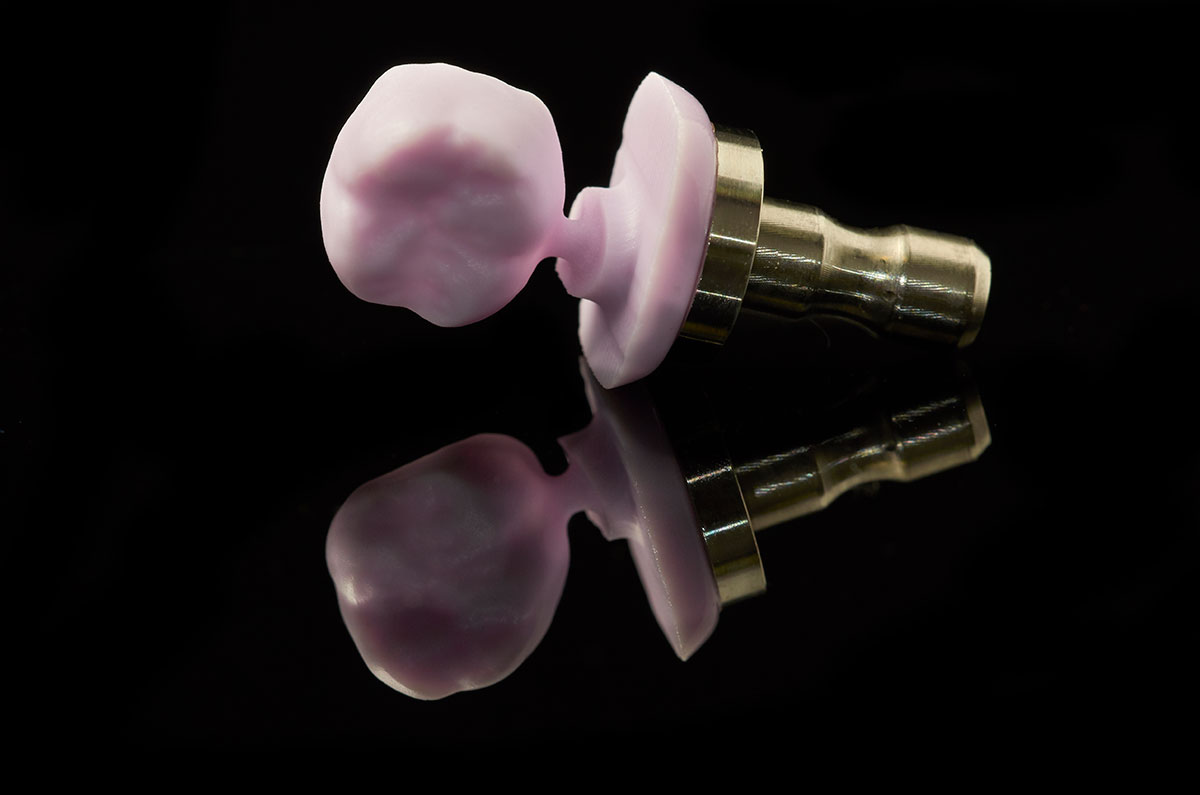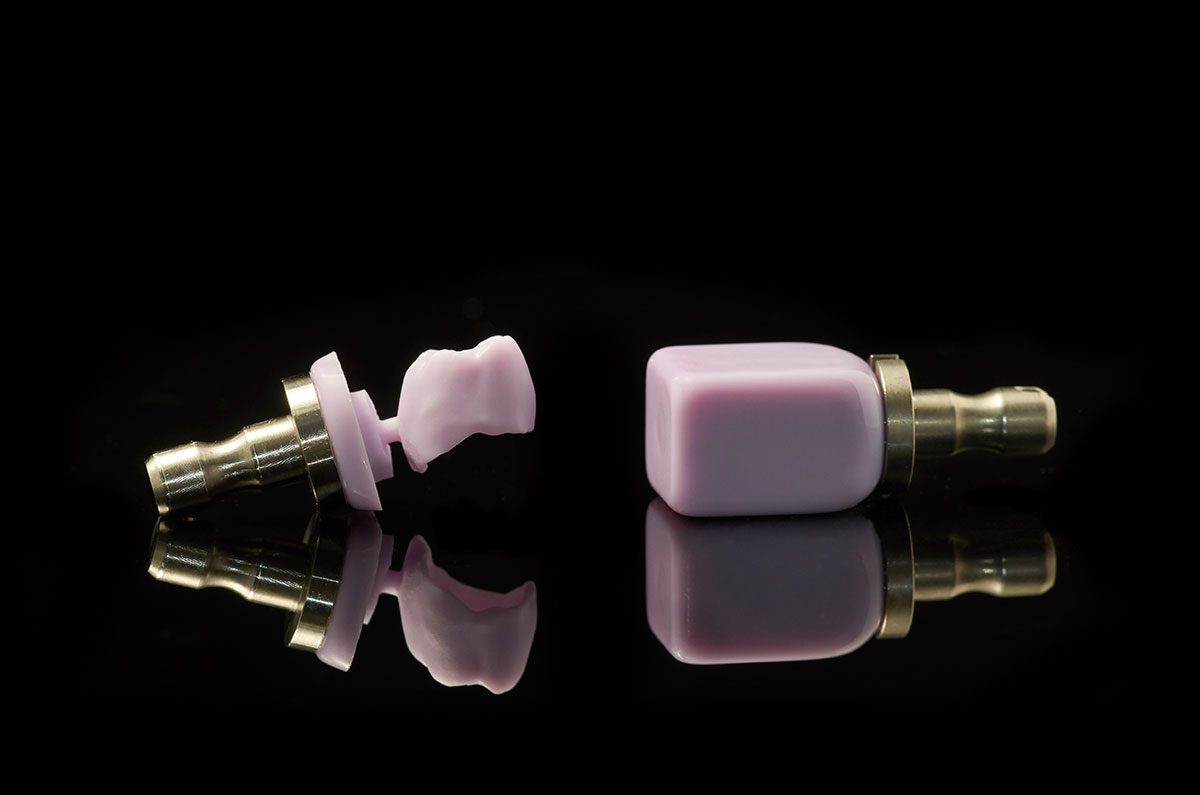-
PHONE
+39 0522 964949 -
PRICE LIST
Ask for the price list
Lithium disilicate is a glass and silicon-based compound with remarkable optical and aesthetic characteristics. The possibility of varying its translucency also makes it a highly versatile material: whereas the best choice for a necrotic tooth is a material with greater opacity, on good dentin one would opt for a high translucency, obtaining in both cases an excellent aesthetic result.

Disilicate is used for crowns, usually up to the second premolar, small bridges, inlays and veneers. Due to its impressive aesthetic quality, this material is ideal for interventions such as veneers, but it also offers excellent results in applications such as inlays on molars, where it guarantees a fine aesthetic result and high strength and durability, unlike composite that tends to wear out.
In the past, working with disilicate was a long and painstaking process: regardless of the element to be produced, it was necessary to start with the lost-wax casting and pinning of the object, followed by pressing. Pressing required quite expensive equipment, including a particular type of ceramic oven, and was a costly and complicated process.
Today, with CAD/CAM and digital technology, the equipment required to produce disilicate elements has been considerably reduced and an intraoral or plaster model scan is enough to produce the required element in a simple way.

Furthermore, digital technology ensures predictability by creating a simulation of the final result that makes it possible to evaluate the shape of the finished tooth.
It is also possible to give the practitioner the opportunity to test the crown by making it in resin first, so that it can be tried on in the patient’s mouth to evaluate its shape, length and general aesthetics, before creating the disilicate replica.
Lithium disilicate features several benefits, as it combines versatility and sturdiness with an excellent aesthetic result. The range of processing offered by Proxera includes reduced or anatomical crowns and sintered disilicate bridges. Request the processing price list: PRICE LIST
© Copyright 2021. All Rights Reserved. Proxera S.r.l. - Via Marchesi, 1 - 42022 Boretto (RE)
C.F. / P.IVA / Reg. Imp. RE 02741880351- R.E.A. 309389- Cap. Soc. € 30.000,00 i.v.a.
Information on the processing of personal data | General terms of sales | Cookies Policy